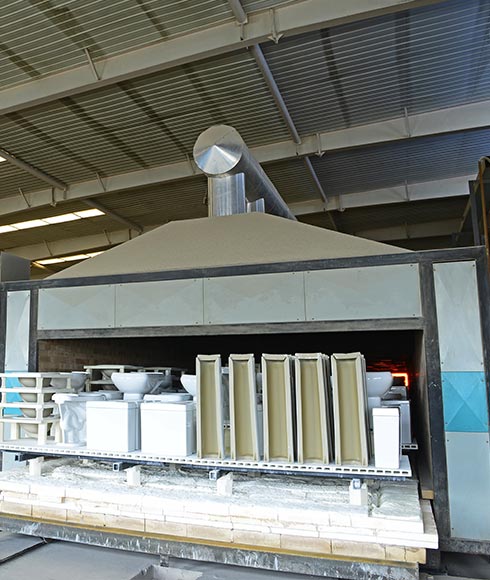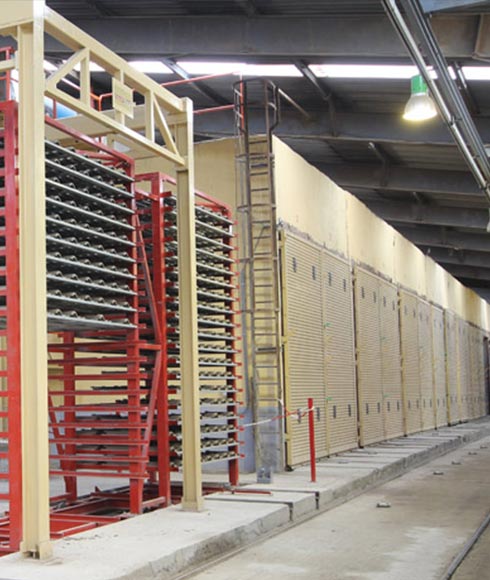REQUEST MORE INFORMATION
If you are interested in our combustion control systems, do not hesitate to contact us. Our team will advise you to improve the efficiency of your combustion processes.

ENERGY SAVINGS AND EFFICIENCY IN TUNNEL AND SHUTTLE KILNS AND DRYERS
The application of the OPTIMA® System in tunnel or intermittent kilns in the sanitary ceramics or tableware industry is very useful.
The implementation of the OPTIMA® analyzers in these kilns is carried out in such a way that all areas of the furnace are controlled in order to adjust the regulation in the different ramps or segments of the firing process (preheating, cooking and cooling). Likewise, it is important to ensure the correct distribution of gas flow in each section of the furnace to guarantee the homogeneity of the atmosphere. Hence it is measured at different points (side wall and/or vault).

In this type of kilns where high quality products are cooked, the analysis of O2%, temperature and pressure in different areas provides the following improvements:
Energy improvements: The percentage of oxygen can be reduced in ranges from 1% to 2%, which implies standard fuel savings of 4% – 6%.
Quality improvements: Guarantee sufficient oxidation of the organic matter to ensure the absence of quality defects such as black core or tone changes that prevent acceptable levels of repeatability.
Environmental improvements: Significant reduction in CO emissions levels with reducing atmospheres, as well as CO2 emissions in the case of oxidizing atmospheres.
Using the OPTIMA® XA System, the following results are obtained:

In a sanitary ceramic or porcelain plant, the dryer is generally (with the permission of the atomizer) the second source of greatest energy consumption.
The results that can be obtained by regulating the different parameters of the dryer depending on the relative humidity, temperature and pressure of the combustion gases are immediate.
Each area of the dryer requires a different “drying atmosphere”, which requires exhaustive control of the recirculation and exhaust air through humidity and temperature in the entire burner area.
This control guarantees both the overall performance of the drying process and an adequate level of quality of the pieces by ensuring correct and progressive removal of moisture. Reduced humidity levels at the entrance to the dryer can cause unnecessary heat extraction, favoring excessive consumption and the appearance of cracks in the pieces.
In the same way, controlling the temperature at the exit of the dryer makes it possible to know and standardize the working conditions on each of the dryer floors.
Control of the drying atmosphere provides greater stability to the drying process and adequate removal of moisture from the pieces. By ensuring constant humidity in each area, the pieces do not suffer strong drying variations due to the existence of gaps in the drying room.

Using the BLUESKY® RH System, the following results are obtained:
REQUEST MORE INFORMATION
If you are interested in our combustion control systems, do not hesitate to contact us. Our team will advise you to improve the efficiency of your combustion processes.


Central
C/ Yunque, 3 28918 Leganés, Madrid
(+34) 916 107 117
central@oxycomb.com
Levante
C/ María Rosa Molas 40 - 1ºB-5. 12004 Castellón
(+34) 964 237 063
levante@oxycomb.com

© 2024 Copyright Oxycomb Sistemas S.L.
Combustion Analyzers | Oxygen Analyzers
Legal Notice | Privacy Policy | Cookies Policy | Accesibility notice | Web Design
